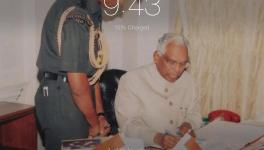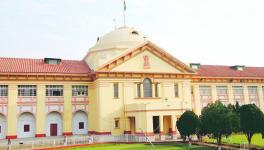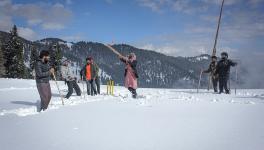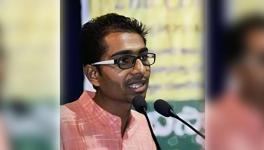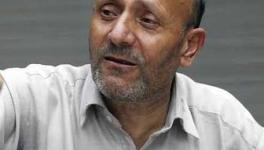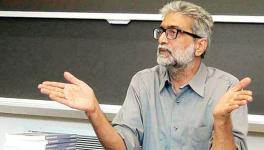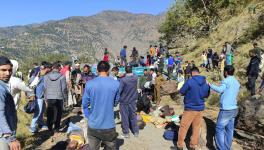Can the NIA Prove Anything in the J&K Terror Funding Case?

Image Courtesy: Millennium Post
In May of last year, the National Investigation Agency (NIA) registered an FIR against 12 people “for conspiring to wage war against the Government of India by carrying out terrorist and secessionist activities in the State of Jammu & Kashmir.” Amongst the accused are Hafiz Saeed, chief of Jamat-ud-Dawah, and Syed Salahuddin, chief of Hizbul Mujahideen, both of whom are not in India. The NIA says in its chargesheet that Hurriyat leaders have been conniving with the Pakistani state and these terrorist organisations for spreading unrest in the Valley. This includes stone-pelting and mass uprisings in 2016 that emerged in the wake of Burhan Wani’s killing. However, the evidence presented by NIA in its chargesheet filed in late January raises a lot of questions about the evidence they proffer.
The other accused are members of All Parties Hurriyat Conference, a photojournalist, a “stone pelter”, and a Kashmiri businessman accused of being a conduit for the separatist funding or somehow involved. Leaders of different Hurriyat factions, such as Syed Ali Shah Geelani, Mirwaiz Umar Farooq, and JKLF leader Yasin Mailk amongst others have been named throughout the chargesheet, and significantly more frequently than the actual accused for having connections with terrorist groups, but they themselves are not named as accused.
Important part of NIA’s evidence in the case is from open sources, such as YouTube videos, Facebook posts, and the Hurriyat website. It should be noted that such posts would have been available in the public domain for a long time. A close reading of the evidence suggests that NIA, supporting the narrative that the Indian government has been striving to establish, wants to paint the picture that the source of all unrest in Kashmir is Pakistani involvement and funding, ignoring the fact that actions and policies of the Indian Government themselves have led to the disenchantment of Kashmiris with India.
The NIA chargesheet, an almost 13,000 page document, consists of more of a background history of militancy in Kashmir than actual evidence against the accused.
One of the pieces of evidence cited against the Hurriyat members is a page on their website, www.huriyatconference.com, titled “Freedom Struggle”. The page reads, “At 9.30 A.M. on October 27, 1947 Indian troops landed in Kashmir and ever since that people of Jammu and Kashmir have been fighting against Indian Occupation.”
The chargesheet quotes this saying, “This kind of content clearly shows the secessionist agenda of Tehreek-e-Hurriyat and its leaders and cadres. The main aim and object is to succeed in breaking Jammu and Kashmir away from Union of India. All their activities and programmes are aimed at inciting and instigating people against the government of India and the security forces in order to achieve the so called ‘freedom from the Indian occupation’.”
It is known that Hurriyat has been vocal about the discontent of Kashmiri people with the Indian Government, and for providing leadership to the popular protests and agitation. So this opinion is not restricted to Hurriyat alone. However, if having such opinions is an offence, then by NIA’s logic, anyone who espouses the cause of self-determination in Kashmir should be punished, which by extension includes most Kashmiri citizens.
NIA’s central claim is that funds from Pakistan are used to pay Kashmiris for pelting stones and carrying out other attacks and anti-national activities. However, the chargesheet fails to credibly show money actually going into funding stone pelting. While funds do come from Pakistan for the Hurriyat, to say that those funds are the cause of all unrest in the valley cannot be established by the kind of evidence that has been presented by NIA. One must also consider that the Kashmiris who take to the streets to pelt stones often do so at the cost of their lives, or in many cases their eyesight. To then say that thousands of Kashmiris are willing to make such sacrifices for meagre financial benefits does not add up.
A lot of the evidence is just the accused forwarding messages on WhatsApp or Facebook consisting of statements and speeches made by Geelani and other members of the Joint Resistance Leadership (JRL). It is surprising that India’s premier investigation agency took over six months to file a chargesheet based on such innocuous information and passes this off as “evidence” is a cause for concern. It should also be noted that the Hurriyat is not a banned organisation, which raises the question that should such most common of all social media engagement such as forwarding messages be considered incriminating.
In one part of the chargesheet, NIA says that Pakistan High Commission in New Delhi regularly organised events to which Hurriyat leaders were invited and “were given instructions and funds on a regular basis.” To prove this charge, NIA has provided a copy of an invitation card from the High Commission seized from the house of one of the accused.
Another piece of evidence cited is a video of a conversation between Burhan Wani and Hafiz Saeed discussing financial assistance to Lashkar-e-Taiba. No links between this video and the accused have been explained.
NIA also says that various terrorist groups, such as United Jihad Council, Jamat-Ul-Dawah, Kashmir Cell, and Pakistan-based Hurriyat, are acting in collusion and supplying arms and funds to terrorists active in J&K. To substantiate this claim, an email from the convener of Pakistan-based Hurriyat, Ghulam Mohammed Safi, to accused Ayaz Khandey, spokespersonof APHC is quoted. The email says that Pakistan condemns killing of innocent Kashmiris, and the extrajudicial killing of Burhan Wani, and calls for India to allow self-determination of Kashmir through the UN resolution of a plebiscite. While the contents of the email might be unacceptable to some, they fall short in proving the charges that have been alleged in the inference drawn by NIA. The contents of this email have nothing incriminating in them.
One of the widely followed cases in this entire story is of photojournalist Kamran Yusuf. Yusuf regularly contributed photographs to Greater Kashmir and other dailies. He has been accused of stone pelting, and has defended himself in court saying that he was present at various stone-pelting sites only because he was covering incidents of protests. Yusuf was arrested in September last year for this case. His bail orders have been pending for over six months in the NIA special court in Delhi. There is no substantial evidence against him, causing many to comment that this is a politically motivated case meant to intimidate journalists in Kashmir. His arrest has been strongly condemned by international journalist groups.
One of the evidences against Bashir Ahmad Bhat, Secretary of Tehreek-e-Hurriyat, is sharing a photo of Afzal Guru. Another accused, Altaf Ahmad Shah, Public Relations Officer at Tehreek-e-Hurriyat, had a copy of a handwritten letter from Afzal Guru. In this letter, addressed to Geelani, Afzal Guru is asking for help in being shifted from Delhi jail to Srinagar jail. The request itself is valid and common in any criminal justice system.
Plenty of issues exist in the case the NIA is presenting. The hardened stance of the Indian government in pushing for such cases is reflected in this chargesheet. And there is a danger that if NIA continues to foist such cases, the already delicate situation in the valley may become worse.
Get the latest reports & analysis with people's perspective on Protests, movements & deep analytical videos, discussions of the current affairs in your Telegram app. Subscribe to NewsClick's Telegram channel & get Real-Time updates on stories, as they get published on our website.









